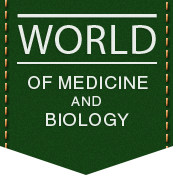| About the author: |
R. S. Vastyanov, O. M. Stoyanov, V. V. Dobrovolskyi, O. L. Plakida, K. O. Talalayev, V. V. Babienko, G. F. Stepanov |
| Heading |
EXPERIMENTAL MEDICINE |
| Type of article |
Scentific article |
| Annotation |
The purpose of the study was to evaluate the changes in motor and muscle activity in the dynamics of the post-traumatic period in conditions of serotonin-, dopamine- and noradrenergic neurotransmitter systems activity modulation. Experimental trials were performed on a model of brain trauma of medium severity. Prior to this, measures were taken to activate and suppress the activity of serotonin-, dopamine- and noradrenergic neurotransmitter systems in animals. The peculiarities of motor and muscle activity were determined 1, 7, 14, 21, 28 and 35 days after the brain trauma reproduction with rats’ activity of monoaminergic neurotransmitter systems modulation of rats, the features of motor and muscle activity were determined. The data obtained confirm the motor and muscle disorders development in rats with brain trauma medium severity starting from the 1st day till the 35th day of the post-traumatic period. The post-traumatic period is characterized by evident neurological deficits and motor and muscle disorders which are manifested by muscle weakness, the inability to keep and maintain a natural position, as well as the inability to perform synchronous coordinated movements. Revealed motor and muscle dysfunctions are persistent and have their maximal expression during the first 14 days of the post-traumatic period. Serotoninergic and dopaminergic neurotransmitter systems activation in rats with brain trauma causes the motor and muscle functions of the body restoration and normalization. The authors stressed that serotoninergic and dopaminergic neurotransmission pathogenetic importance in conditions of traumatic brain damage should be taken into account when compiling and determining the clinical efficacy of complex pathogenetic therapy schemes for patients with brain trauma. |
| Tags |
brain trauma,ischemia,monoaminergic neurotransmission,motor activity,muscle tone,compensatory activity,sanogenetic mechanisms |
| Bibliography |
- Bakumenko IK. Rozrobka kompleksnoyi patohenetychno obgruntovanoyi korektsiyi povedinkovykh, emotsiynykh zrushen ta nevrolohichnykh rozladiv pry khronichniy ishemiyi mozku v razi obmezhennya krovopostachannya po khrebtovykh arteriyakh za umov eksperymentu. Visnyk morskoyi medytsyny. 2015; 1(66): 70–76. [in Ukrainian].
- Zyablitzev SV, Starodubska OO, Bogza SL. Farmakolohichna korektsiya kohnityvnykh porushen pry cherepnomozkoviy travmi. Aktualni problemy suchasnoyi medytsyny: Visnyk Ukrayinskoyi medychnoyi stomatolohichnoyi akademiyi. 2017; 17(3): 25–29. [in Ukrainian].
- Kozlov SV, Mishalov VD, Suloev KM, Kozlova YuA. Patomorfolohichni markery vybukhoindukovanoyi travmy holovnoho mozku. Morpholohiya. 2021; 15(3): 96–100. doi: 10.26641/1997-9665.2021.3.96-100 [in Ukrainian].
- Pedachenko EH. Neyrokhirurhiya Ukrayiny: syohodennia i perspektyvy. Ukrayinskyy neyrokhirurhichnyy zhurnal. 2018; 1: 5–18. doi: 10.25305/unj.117775 [in Ukrainian].
- Stoyanov OM, Pulyk OR, Vastyanov RS. Patohenetychne znachennya tsentralnoyi monoaminerhichnoyi neyroperedachi v mekhanizmakh rozvytku motornykh dysfunktsiy ta nevrolohichnoho defitsytu pislya lehkoyi cherepno-mozkovoyi travmy. Naukovyy visnyk Uzhhorodskoho universytetu. Seriya: Medytsyna. 2015; 1: 100–107 [In Ukrainian].
- Brazinova A, Rehorcikova V, Taylor MS, Buckova V, Majdan M, Psota M. et al. Epidemiology of Traumatic Brain Injury in Europe: A Living Systematic Review. J Neurotrauma. 2021; 38(10): 1411–1440. doi: 10.1089/neu.2015.4126.
- Cordeiro LMS, Rabelo PCR, Moraes MM, Teixeira-Coelho F, Coimbra CC, Wanner SP, et al. Physical exercise-induced fatigue: the role of serotonergic and dopaminergic systems. Braz J Med Biol Res. 2017; 50(12): 6432. doi: 10.1590/1414-431X20176432.
- Finnie JW. Forensic Pathology of Traumatic Brain Injury. Vet Pathol. 2016; 53(5): 962–978. doi: 10.1177/0300985815612155.
- Galgano M, Toshkezi G, Qiu X, Russell T, Chin L, Zhao LR. Traumatic Brain Injury: Current Treatment Strategies and Future Endeavors. Cell Transplant. 2017; 26(7): 1118–1130. doi: 10.1177/0963689717714102.
- Happel MF, Deliano M, Ohl FW. Combined Shuttle-Box Training with Electrophysiological Cortex Recording and Stimulation as a Tool to Study Perception and Learning. J Vis Exp. 2015; 105: e53002. doi: 10.3791/53002.
- Mollayeva T, Mollayeva S, Pacheco N, Colantonio A. Systematic Review of Sex and Gender Effects in Traumatic Brain Injury: Equity in Clinical and Functional Outcomes. Front Neurol. 2021; 12: 678971. doi: 10.3389/fneur.2021.678971
- Neves BS, Barbosa GPDR, Rosa ACS, Picua SS, Gomes GM, Sosa PM, Mello-Carpes PB. On the role of the dopaminergic system in the memory deficits induced by maternal deprivation. Neurobiol Learn Mem. 2020; 173: 107272. doi: 10.1016/j.nlm.2020.107272.
- Ostapenko IO. The perspectives of pharmacological correction of depressive disorders and cognitive deficit as post-traumatic epilepsy leading syndromes. Journal of Education, Health and Sport. 2022; 12(2): 360–369. doi: 10.12775/JEHS.2022.12.02.037.
- Ostapenko IO. Dynamic changes of striatal neurotransmitter systems activity cause changes in behavioral non-convulsive disorders of depressive nature in the course of chronic seizure activity formation in kindling model of epileptogenesis. Journal of Education, Health and Sport. 2023; 13(4): 386–403. doi: 10.12775/JEHS.2023.13.04.045.
- Tugba EK, Medine GIO, Ozlem A, Deniz K, Filiz OY. Prolongation of absence seizures and changes in serotonergic and dopaminergic neurotransmission by nigrostriatal pathway degeneration in genetic absence epilepsy rats. Pharmacol Biochem Behav. 2022; 213: 173317. doi: 10.1016/j.pbb.2021.173317.
|
| Publication of the article |
«World of Medicine and Biology» №3(89), 2024 year, 214-219 pages, index UDK 616-092;616-001;611.08;615.036 |
| DOI |
10.26724/2079-8334-2024-3-89-214-219 |
